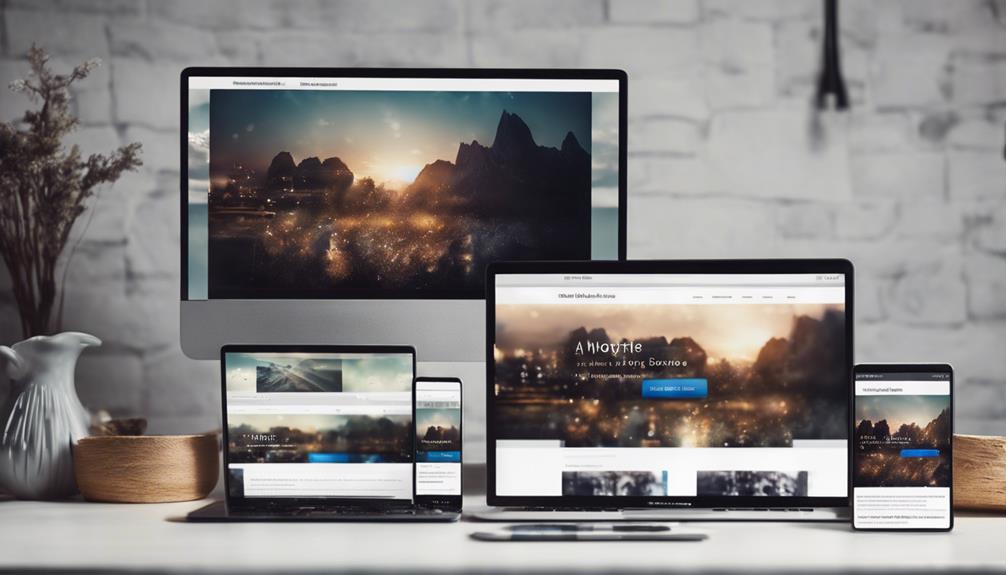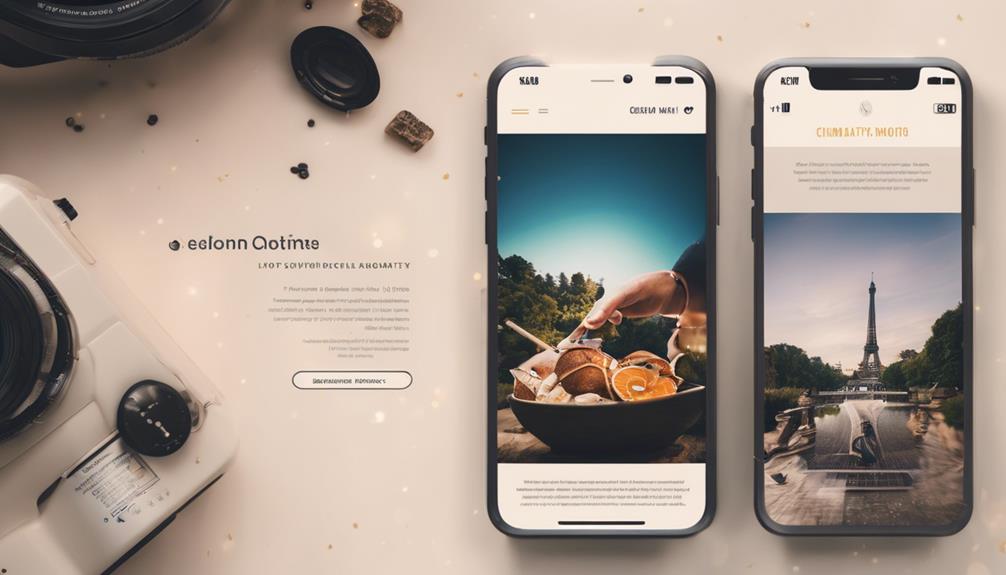In the realm of web design, the strategic incorporation of essential elements can make or break the user experience. From responsive design to effective use of white space, each component plays a crucial role in capturing visitors' attention and guiding them through a website seamlessly.
Yet, the nuances of navigation, color schemes, and mobile optimization strategies add layers of complexity that demand careful consideration. By understanding how these elements intertwine to create a cohesive digital presence, designers can elevate their craft and leave a lasting impact on users.
Importance of Responsive Design

Responsive design is an indispensable aspect of modern web development, ensuring optimal user experience across various devices. In today's digital landscape, where users access websites on smartphones, tablets, laptops, and desktops, having a responsive web design is crucial. The importance of responsive design lies in its ability to adapt the layout and content of a website to fit the screen size and resolution of the device being used. This ensures that users have a seamless experience, whether they are viewing the site on a large desktop monitor or a small smartphone screen.
One of the key benefits of responsive design is that it eliminates the need to create separate websites for different devices, streamlining the development process and making maintenance more manageable. Additionally, responsive design is favored by search engines like Google, as it improves the website's performance on mobile devices, ultimately boosting its search engine rankings. Embracing responsive design is not just a trend but a best web design practice that caters to the diverse needs of modern users.
Effective Use of White Space
In web design, the strategic utilization of white space plays a pivotal role in enhancing visual appeal and user experience. White space, also known as negative space, refers to the empty areas between elements on a webpage. Effectively incorporating white space in web design helps in improving readability, directing attention to key elements, and creating a sense of sophistication and elegance.
When used appropriately, white space can make a website feel less cluttered, guiding users through the content more smoothly. It allows for better organization of information and helps in establishing a visual hierarchy, where important elements stand out while less crucial ones recede into the background. Moreover, white space can evoke a sense of openness and modernity, contributing to a more pleasant browsing experience.
Web designers must carefully balance the use of white space to avoid overcrowding or leaving the page looking sparse. By understanding the principles of effective white space utilization, designers can create visually appealing and user-friendly websites that engage visitors effectively.
Navigation and User Experience

Ensuring intuitive navigation enhances the user experience on a website, facilitating smooth interaction and efficient access to information. Navigation is a critical component of web design principles, directly impacting how users engage with a site. Clear menus, logical organization, and easy-to-find links are essential for guiding visitors through the content. User experience (UX) focuses on creating a positive interaction between the user and the website, emphasizing usability and accessibility. By designing user-centric navigation, designers can improve the overall experience and encourage users to explore further.
Incorporating intuitive navigation involves strategic placement of menus, search bars, and call-to-action buttons. Consistent navigation elements across all pages provide familiarity and ease of use. Additionally, optimizing for mobile responsiveness ensures a seamless experience across devices. User experience design considers factors such as page loading speed, content readability, and visual hierarchy to enhance usability. By prioritizing navigation and user experience, designers can create websites that are both visually appealing and highly functional.
Color Scheme and Branding
A cohesive color scheme and strong branding are foundational elements in establishing a website's visual identity and fostering brand recognition. When it comes to web design, selecting the right color scheme is crucial as colors evoke emotions and influence user behavior. The color scheme should align with the brand's identity and values to create a seamless experience for visitors. Consistency in colors across the website helps in brand recognition and reinforces the brand image in the minds of users.
Branding plays a significant role in differentiating a website from its competitors. It encompasses not only the logo and visual elements but also the tone of voice, messaging, and overall user experience. By effectively integrating branding elements into the web design, a website can communicate its unique selling proposition and create a memorable experience for visitors.
Mobile Optimization Strategies

With the increasing prevalence of mobile devices as the primary means of accessing websites, implementing effective mobile optimization strategies has become imperative for ensuring a seamless user experience.
Mobile web design focuses on creating websites that are optimized for viewing on various mobile devices, ensuring that they load quickly and are easy to navigate on smaller screens. Web design and development professionals emphasize the importance of responsive design, where websites adjust their layout based on the device being used.
Web design firms specialize in creating mobile-friendly websites that cater to the needs of on-the-go users. These firms prioritize factors like mobile site speed, intuitive navigation, and touch-friendly elements to enhance the user experience.
Accessibility and SEO Best Practices
Implementing effective accessibility and SEO best practices is essential for enhancing website visibility and usability.
Accessibility in web design ensures that all users, including those with disabilities, can access and navigate the website easily. This involves using alt text for images, providing transcripts for audio content, and ensuring proper color contrast for readability. By prioritizing accessibility, websites can reach a broader audience and improve user satisfaction.
SEO best practices are crucial for improving a website's search engine rankings and driving organic traffic. This includes optimizing meta tags, using relevant keywords, creating quality content, and building backlinks from reputable sites. By following SEO guidelines, websites can increase their online presence and attract more visitors.
Incorporating both accessibility and SEO best practices into web design not only benefits users but also enhances the site's overall performance. It creates a more inclusive and user-friendly experience while also improving search engine visibility. By prioritizing these elements, websites can effectively reach their target audience and achieve their online goals.
Frequently Asked Questions
How Can Web Design Elements Impact a Website's Loading Speed?
Web design elements can significantly affect a website's loading speed. Factors such as image size, coding complexity, and excessive use of plugins can slow down loading times. Optimizing these elements is crucial for a faster user experience.
What Are Some Common Mistakes to Avoid When Designing a Website Layout?
When designing a website layout, common mistakes to avoid include cluttered interfaces, inconsistent branding, poor navigation, excessive use of stock images, and ignoring mobile responsiveness. Addressing these issues can enhance user experience and engagement.
How Can User Testing Improve the Effectiveness of a Website's Navigation?
User testing can enhance a website's navigation by providing valuable insights into how users interact with the design. Through observing user behavior, designers can identify pain points, improve usability, and ensure a seamless browsing experience, ultimately boosting the site's effectiveness.
What Are Some Creative Ways to Incorporate Branding Into a Website's Color Scheme?
Incorporating branding into a website's color scheme involves selecting hues that reflect the brand's identity. Utilizing color psychology, integrating brand colors strategically, and infusing subtle brand elements can create a cohesive and memorable user experience.
How Can Website Accessibility Be Improved for Users With Disabilities Beyond Standard Practices?
Improving website accessibility for users with disabilities beyond standard practices involves implementing features like alt text for images, keyboard navigation, color contrast adjustments, and ensuring compatibility with screen readers. Prioritizing inclusive design enhances user experience and engagement.

